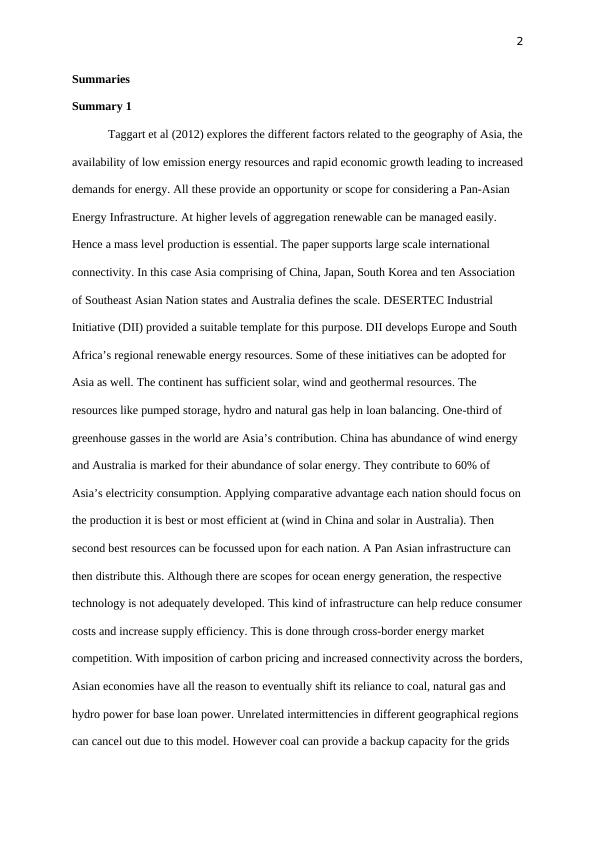Review and Analysis of Renewable Energy Development in Asian Economies
Analyzing two credible research papers on renewable energy in Asian nations and evaluating their merits for future studies.
7 Pages1892 Words54 Views
Added on 2022-12-29
About This Document
This paper evaluates two articles on renewable energy generation in Asian economies, discussing barriers and opportunities for development. It highlights the need for government support and international energy trade.
Review and Analysis of Renewable Energy Development in Asian Economies
Analyzing two credible research papers on renewable energy in Asian nations and evaluating their merits for future studies.
Added on 2022-12-29
ShareRelated Documents
End of preview
Want to access all the pages? Upload your documents or become a member.
Economic Theories and Concept - Assignment
|8
|1488
|25
Economics for Business Assignment
|14
|3664
|36
Economics : Manufacture Renewables to Build Energy Security
|3
|437
|49
Application of Economic Theories and Concept
|9
|1495
|117
Concept of Economics for Business | Article
|7
|1435
|46
Energy and Waste Sustainability
|10
|2316
|303



